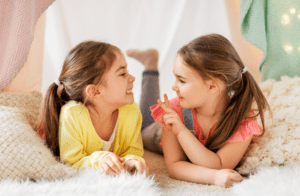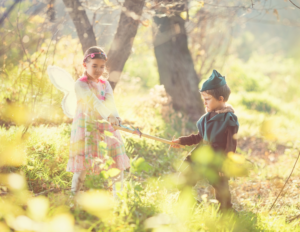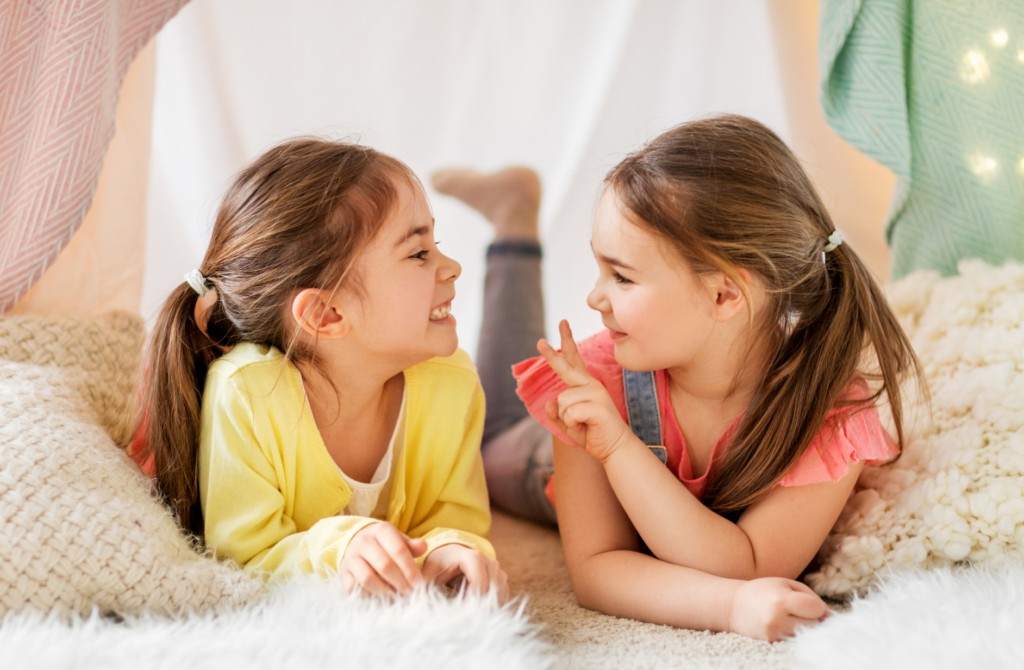March 19, 2023
In this week’s article, we examine the developmental aspects of the “Six Year Change” that influence Social Ability. It is the final article in a series that has focused on the development of social ability throughout early childhood. You can look back to our previous articles to learn more:
Social Ability Begins to Blossom, Social Ability and Becoming “I”, Social Ability in Toddlerhood, and Social Ability and the First Year of Life.

“We can be instruments to help guide the children in building a moral foundation. We must accompany the children in such a way that the powerful will that we have nurtured in them has a proper vessel in which to germinate and grow. It is an honor always and a trial sometimes.”
-Ruth Ker, author of “You’re Not the Boss of Me- Understanding the Six/Seven Year Transformation”
Watching our child thrive as an older kindergartener~ their delightfully deep play, their imaginative explanations and stories, their growing independence~ it can be perplexing to suddenly instead meet the opposite. Nearing their sixth birthday and beyond, many children move through a moment of crisis as they shift out of early childhood into middle childhood. They experience a sense of dissatisfaction or restlessness, and begin pushing boundaries in new ways.
The intensity of their discomfort expressed through undesirable behaviors varies individually, but a common underlying theme is wanting to be the boss. No longer contented by unconscious imitation of what the group is doing, they are striking out on the path to new-found individuality and experiencing the growing pains that come along with it.
As parents and educators, we may notice other changes in their bodies and appetites at this time~ everything is stretching and growing. Their “baby softness” disappears as their necks, torsos and limbs elongate; they become a bit clumsy in their new bodies. Simultaneously, their own life-force body is separating from ours. No longer do they need to be imbued by our life-giving energy, their body is becoming its own, wholly. Physically, emotionally and intellectually, they are pulling away from us, as they are moving out of early childhood. Naturally, this leads to such resistance and discomfort as has been noted.
 They are also growing a new layer of intellectual capacity as their imaginations have blossomed, and developing the capacity for creating the inner pictures necessary for the new forms of learning they will experience in the grades. At this age, their grand ideas are met with a strong will and they are compelled to bring these ideas to fruition. As a parent or educator, It is helpful to offer them time, space and material to follow through with these creations in play. This will lay the spiritual groundwork for knowing the process of manifesting their unique contributions and the fulfillment found in them in later life. When we sense their restlessness again, bringing them into the fold of our meaningful work can jumpstart them back into healthy play.
They are also growing a new layer of intellectual capacity as their imaginations have blossomed, and developing the capacity for creating the inner pictures necessary for the new forms of learning they will experience in the grades. At this age, their grand ideas are met with a strong will and they are compelled to bring these ideas to fruition. As a parent or educator, It is helpful to offer them time, space and material to follow through with these creations in play. This will lay the spiritual groundwork for knowing the process of manifesting their unique contributions and the fulfillment found in them in later life. When we sense their restlessness again, bringing them into the fold of our meaningful work can jumpstart them back into healthy play.
We might notice, too, some of the first times our child becomes exclusive, seeking out playing with this friend only, seeking privacy or secret-keeping. Some children seem particularly interested in pointing out or even boasting about their differences, or feeling vulnerable to them in comparison to others. It is all in reflection of the inner process of pulling away in consciousness from the adult, growing in awareness of the surrounding world, and experimenting and attempting to make sense of it. There is still imitation in much of the “naughty” or undesirable behaviors and a firm, but loving boundary is welcomed.
Intellectually explaining, lecturing, or ignoring the behaviors in hopes to save our energy after riding out a storm will do no good. What they wish for most is to be seen and to feel our firm support, strengthened by our love and the knowledge of what is good for them in the larger scope of their growth.
 Instead of falling into intellectualizing things for them too early, we may find a companion in offering lively story images. Fairy tales are one type of story that continually offers images of the parts of themselves that they are just becoming familiar with ,and gives them appropriate avenues for exploring them. Furthermore, as they relate to all these archetypal character types, they also always find the Good innately contained in themselves and in the world. These stories serve as a healing balm for this small crisis moment.
Instead of falling into intellectualizing things for them too early, we may find a companion in offering lively story images. Fairy tales are one type of story that continually offers images of the parts of themselves that they are just becoming familiar with ,and gives them appropriate avenues for exploring them. Furthermore, as they relate to all these archetypal character types, they also always find the Good innately contained in themselves and in the world. These stories serve as a healing balm for this small crisis moment.
My colleague, Iris Wheatley described this experience well recently,
“In each of us lives the greedy brother, the kind daughter, the truthful prince, and the magic snake. Young children relate to all of these characters as parts of themselves on a deep level, although they do not say this with words necessarily. The symbolic imagery of the story reaches the young child in a very deep way. Fairytales…give the children a place to explore these feelings and gifts through a narrative perspective. In the end, the good will prevail, and so it is within us.”
Indeed, experiencing the shift at six to seven years in our child can be frustrating, but it is also exciting. As we grapple to help them through this moment, we witness the first steps they are taking into middle childhood, and we realize, they’re not so little anymore!

